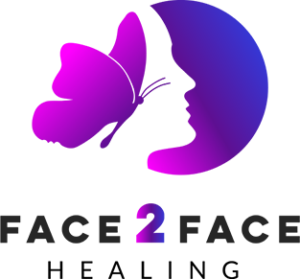This article was originally published in Our South Bay.
Fillers, injections and other cosmetic procedures are today’s magic wand. A few enchanting needle pricks, and fine lines, wrinkles and crow’s-feet miraculously vanish. It seems fighting the cruelty of age has never been easier. But what if the fairy tale ending of youth you imagined instead turned out to be the ultimate curse?
Carol Brian has relied on her looks from an early age, first modeling and later entering the beauty industry. Like many of us, Brian wanted to preserve her youth and that beautiful face that had previously opened countless doors. So she opted for the seemingly magic fix of fillers.
The damage from the injections Brian received was not immediately obvious. Soon, though, it became clear that this wasn’t the magical procedure she was promised. Brian’s face was unrecognizable.
Subsequent attempts to correct the damage only made things worse. “The procedures resulted in my face expanding, contracting and becoming distorted. Once the initial damage was done, I was no longer able to go out in public,” recalls Brian of her ordeal.
In fact, the outcome was so severe that Brian refused to socialize—and even hid from close friends and family for several years. “It was so bad I needed to hide my face,” she says.
Luckily Brian’s tale doesn’t end here. Enter her knight in shining armor: Dr. J. Brian Boyd, professor of surgery and chief of plastic surgery at UCLA. After a colleague, Dr. Reza Jarrahy, presented Brian’s case at rounds, Dr. Boyd was compelled to help.
“Other surgeons were reluctant to take her on because she had lost sight in one eye after previous procedures,” says Dr. Boyd. “As a physician I felt a degree of vicarious shame in what had been done to this unfortunate lady at the hands of another doctor—especially one practicing facial aesthetics.”
Now after several years of isolation, Brian placed her faith in their capability and experience of these surgeons brave enough to attempt reconstruction. Several experimental procedures followed.
Dr. Jarrahy performed an excision of the deformed tissue, which was most of the forehead, while Dr. Boyd dissected a large flap of skin and fat from Brian’s back and transferred it to the forehead. The physicians re-established the circulation within the flap by connecting its artery and vein to an artery and vein in the face, working with vessels that were only two millimeters in diameter. Dr. Boyd’s vast experience in microsurgery and free tissue transfer was key to the success of the procedures.
Comparing the final results with preoperative photos, Dr. Boyd was largely concerned that Brian would lose sight in her other eye, becoming totally blind, or that the flap transfer simply won’t take.
In the end Dr. Boyd was able to give Brian not only a new face but also a new life. “The fact that Carol ceased to be a total recluse” was the ultimate reward for the physician.
However, physical healing was only half of the journey. “I’ve learned so much about life, people, trust, courage, forgiveness and restoration. My healing journey has set me on a path of being a living example of what people go through to survive unthinkable circumstances,“ explains Brian.
While attributing the success of the corrective procedures to the talented surgeons, she notes that her physical healing would have been impossible without the work she has put forth to heal internally.
“Without emotional and psychological balance, I don’t think I could or would have made it through this experience with such ease and with a smile on my face.”
Much of the mental healing came from the support of Face2Face Healing, an East Coast nonprofit organization created to provide the opportunity for individuals with disfigurement to meet and share their stories. Today Brian is the West Coast director of Face2Face Healing.
”I know that I can help make a difference for others who are facially disfigured by supporting, encouraging and sharing my strength and courage,” she says.
Like most tales, this one has an important lesson: Make sure the physician you choose is a board-certified plastic surgeon, facial plastic surgeon or dermatologist.
“I’ve learned that there is a great need for the medical community to address the regulatory issues concerning practitioner capabilities and product usage,” she says. In short, do your research not only on the practicing physician but also on the materials used.
”Don’t be guinea pig for new facial treatments,” adds Dr. Boyd.
We should all believe in a little magic and happy endings, but we should also remember that when things sound too good to be true, they often are.





